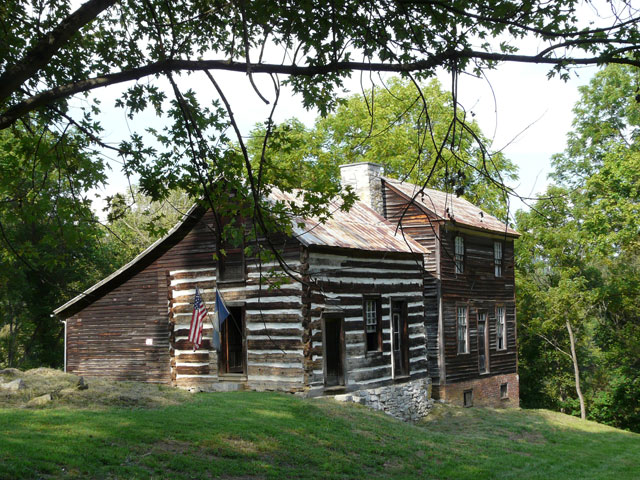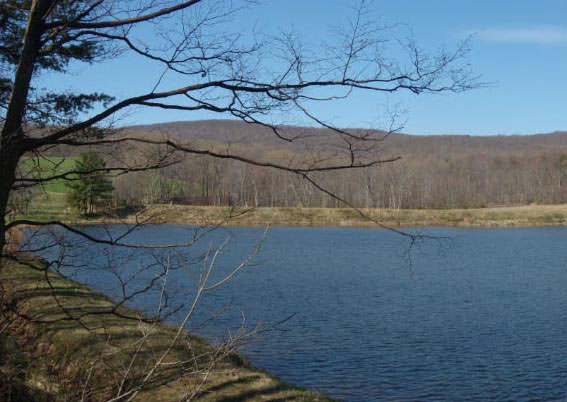More than 700 acres of land at James Madison’s Montpelier, the home of the Father of the Constitution in Orange County, was permanently protected today through a unique public-private partnership. The Piedmont Environmental Council (PEC) worked with the Virginia Outdoors Foundation (VOF) and the Virginia Department of Historic Resources (DHR) to purchase conservation easements on four areas of Montpelier from the National Trust for Historic Preservation and The Montpelier Foundation.
“We are thrilled to work with The Montpelier Foundation and the National Trust to protect this critical historic resource,” said Chris Miller, President of the Piedmont Environmental Council. “Everyone involved felt it was important to move forward with these conservation easements as soon as possible. Montpelier is one of America’s most important and best preserved historic sites, a place that inspired Madison and his thoughts about the Constitution and the future of the United States. Montpelier is the heart of the Madison-Barbour Rural Historic District, is a critical focal point of the Journey Through Hallowed Ground National Heritage Area, contains important Civil War sites, and is the center of heritage tourism in Orange County, with more than 100,000 visitors each year.”
“We hope that the National Trust’s and Montpelier Foundation’s obvious dedication to preserving rural Orange County will help spur other landowners in the area to consider conservation options for their property,” said Jack Snyder, PEC Board Member and Orange County resident. “In the past 20 years, more than 2000 acres immediately surrounding Montpelier have been placed into conservation easement.” See attached map.
These easements will protect four distinct portions of the large Montpelier estate. The East Woods, a 200 acre forested tract is adjacent to the “Landmark Forest,” a nationally recognized old-growth Piedmont forest that is already protected by an easement. Also conserved is Chicken Mountain, a prominent, 245-acre forested tract in the Somerset area. Preservation of these tracts helps to conserve the water quality in local streams, as well as the forested backdrop to Montpelier and the surrounding countryside.
The historic Gilmore Farm, a small 19-acre parcel, will also be protected by the conservation easements. This parcel is the site of the restored home of George Gilmore, a former slave at Montpelier who lived there with his wife Polly and their family. A large Civil War Encampment site, immediately adjacent to the Gilmore Farm, was occupied during the winter of 1863-1864 by troops from Gen. Lee’s Army of Northern Virginia, before they fought at the Battle of the Wilderness. Easements on these properties will protect these cultural assets and make them available for the public benefit
“These four easements at Montpelier, protecting streams, forests, a Civil War encampment, and the home of one of James Madison’s former slave, George Gilmore, demonstrate the power of collaboration between conservationists and preservationists,” said Richard Moe, president of the National Trust for Historic Preservation. “We hope these easements will spur additional protection around James Madison’s Montpelier and serve as a model for other projects. We would like to thank the Piedmont Environmental Council, the Virginia Department of Historic Resources, the Virginia Outdoors Foundation and The Montpelier Foundation for their work on this innovative collaboration.”
Moe also noted that proceeds from the sale of the easements will go towards Montpelier’s endowment, ensuring the future fiscal integrity of this important historic place
“The Montpelier Foundation is extremely pleased with this partnership and the resulting conservation easements that will protect this national treasure,” said Michael C. Quinn, president of the Foundation. “With these easements, we are ensuring that future generations will be able to experience the extraordinary range of Montpelier’s heritage, just as it has been preserved today.”
The help of the Commonwealth of Virginia in protecting this land was vital. The Virginia Outdoors Foundation and the Virginia Department of Historic Resources provided technical assistance and advice on the easements, as well as serving as co-holders of the easements with the PEC. Funding from the Virginia Land Conservation Foundation, coupled with private donations helped make these easements a reality.
“VOF is pleased to be part of the effort to permanently protect portions of Montpelier with conservation easements and commends the National Trust and The Montpelier Foundation for their foresight and commitment to land conservation. Not only are the lands protected part of the highly significant historic home of President James Madison, but the lands also adjoin approximately 8,500 acres of contiguous land in easement to VOF. With the two newly recorded easements and the existing Nature Conservancy easement on the Landmark Forest portion of Montpelier, a contiguous block of over 9,000 acres is now permanently protected within the Chesapeake Bay watershed, nearly all of which is in the Madison-Barbour Historic District. VOF thanks Piedmont Environmental Council and Virginia Land Conservation Foundation for making these easements possible,” said Hank Hartz, chairman of the Virginia Outdoors Foundation.
“Once again, the National Trust and The Montpelier Foundation have set the mark for leadership, and the Commonwealth and the nation are the grateful beneficiaries,” said Kathleen S. Kilpatrick, Director of the Virginia Department of Historic Resources. “Taken together these four easements preserve and protect an amazing complement of diverse and outstanding resources, and we are proud to be a partner in ensuring that they are passed along for the future.” Speaking of the encampment site, she noted that, “The roughly 245 acre Civil War site is the largest documented intact encampment site in the country, and it includes five known camps. The rich archaeological resources will be available for future study and education to expand our knowledge and understanding of the Civil War era.”
Speaking of the Gilmore Farm site, Ms. Kilpatrick stressed that “This is an extremely rare resource and a uniquely powerful place with the capacity to connect us to the Freedman’s experience and the struggles, the hopes, and the triumphs they faced in the years after emancipation. George and Polly Gilmore built a home and a new life together for themselves and their family on this farm, raising eight children in that cabin. One of the great honors of the experience of working to achieve recognition for the preservation of the Gilmore’s farm has been to come to know their descendants and to witness the pride they have in the achievements of George and Polly.”
The four easements at Montpelier were purchased by PEC using private donations and a $700,000 grant from the Virginia Land Conservation Foundation (VLCF). The easements were finalized this month to meet a critical deadline of the grant, although the fundraising goal has not been met. The Piedmont Environmental Council and The Montpelier Foundation continue to seek the remaining funding necessary to cover the full costs of these important conservation easements.

